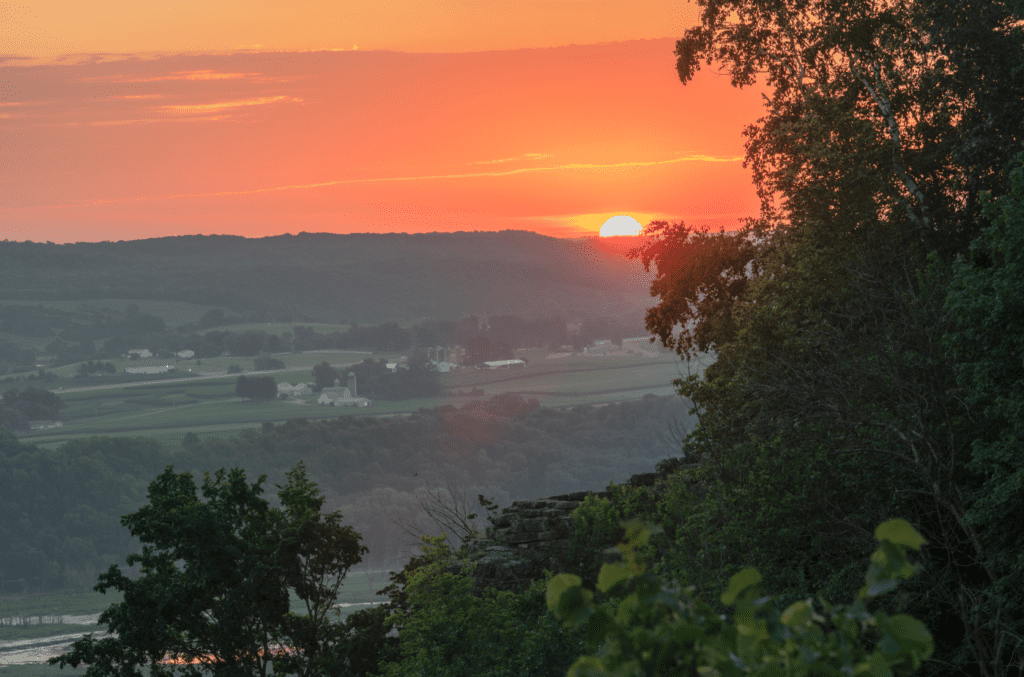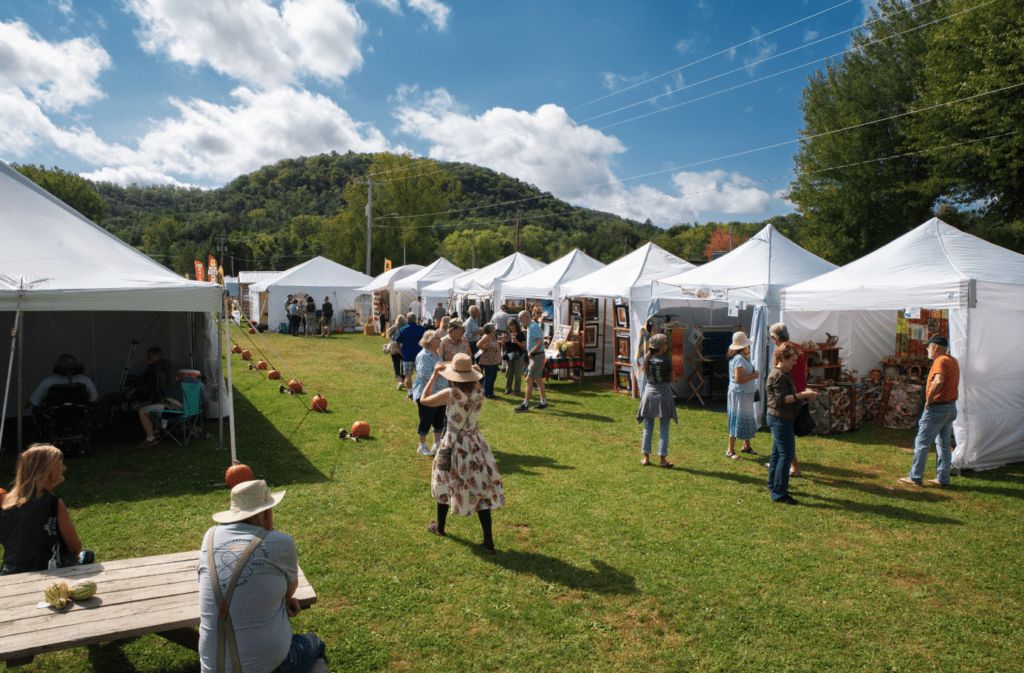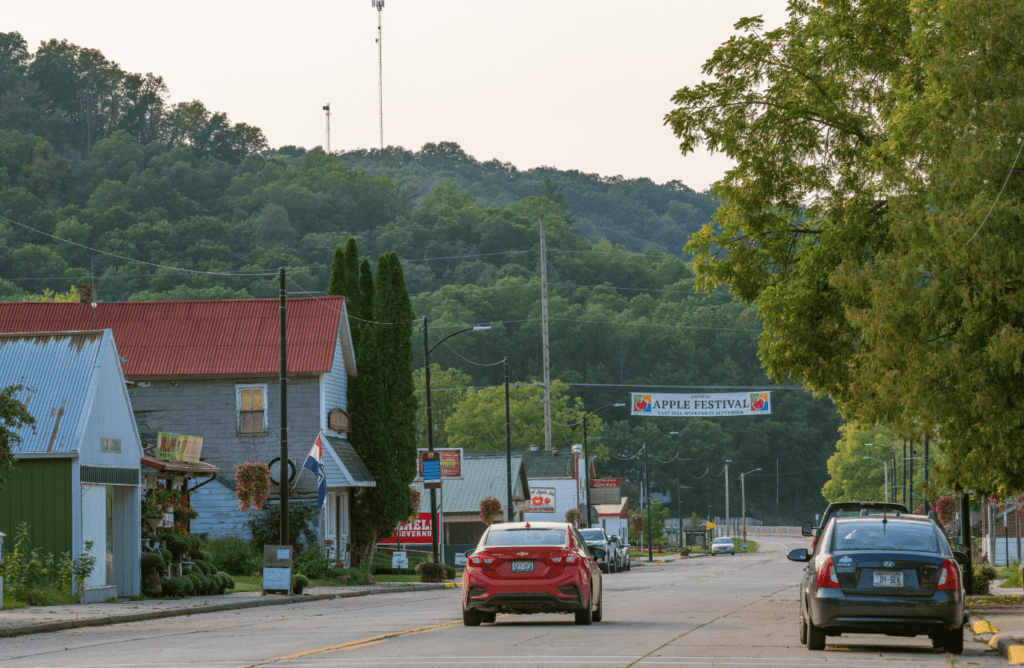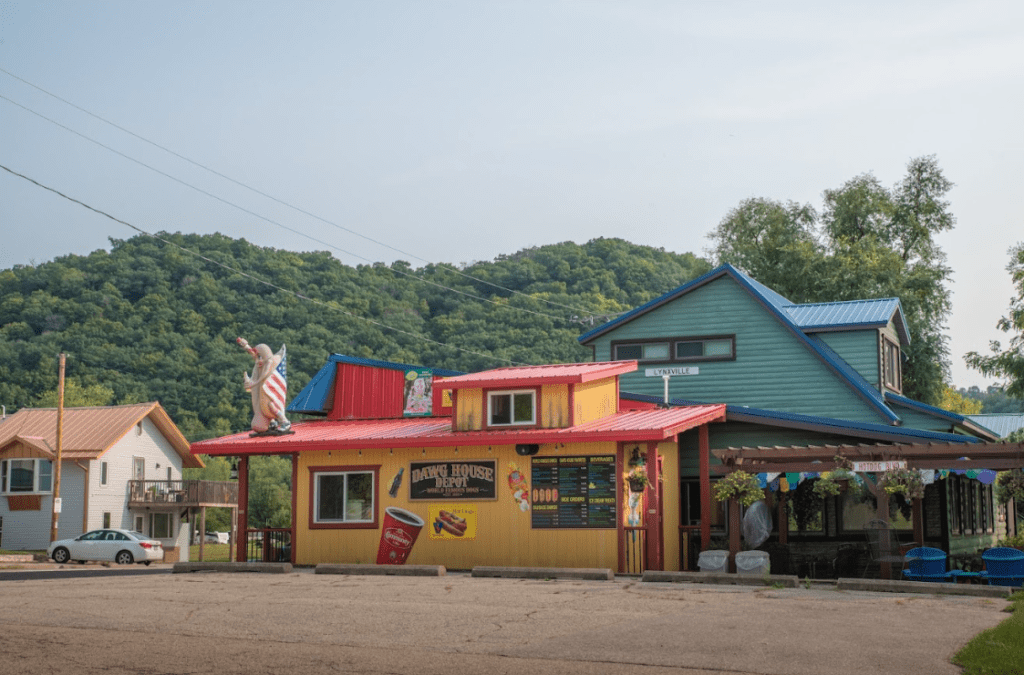Enchanting Places to Live



The unique topography creates enchanting places to live. You can live atop a ridge and watch eagles soar overhead. You can live near the river and experience the pace of life set by the river’s current. Or you can settle in one of the river valleys sheltered by verdant hillsides. Crawford County sits at the confluence of three rivers: the Mississippi, known throughout the world; the Wisconsin, which brought the regions first explores and inhabitants; and the Kickapoo, “the crookedest river in the world.”
Community
The area lends itself to a rural esthetic that fosters a sense of community. Small-town hospitality thrives in the Driftless Region. Small towns make up the fabric of daily life, where neighbors look out for one another and Main Streets finds people gathered in conversation. Big-town conveniences also offer residents with shopping centers and franchise stores to satisfy your shopping needs. We are also fortunate enough to have a Main Street Program for Prairie du Chien and Gays Mills as our Connect Community.
Learn more about Creating Thriving Communities with Wisconsin Economic Development Corporation (WEDC). WEDC and DDI believe that we should invest in our communities to help both people and businesses grow, develop and contribute to our state’s economic vitality. By providing community and business leaders access to this knowledge and support, we’ve helped them create stronger community cornerstones and build vibrant economic epicenters throughout Wisconsin.
Want to know more about a specific community? Click on any of the community links below.
Our Communities
The Driftless Region has a variety of communities boasting businesses for work or leisure. Each area has specific features and backgrounds that will make it a perfect place to call home.

PRAIRIE DU CHIEN – Prairie du Chien, French meaning, “Prairie of the Dog” was name for a Fox/Mexkwaki family who lived here. The name is unique and the only known community in the world with that name. Long before Marquette and Jolliet claimed it for France in 1673, the first men to view the Upper Mississippi from the Wisconsin River, it was where Native Americans met most often to trade. Nicolas Perrot established a fur depot (fort) in the 1680s. The first known white settlers came in the 1770’s. The first Fort Crawford was built in 1816 and the second in 1829. Chief Blackhawk surrendered and was imprisoned at the fort in 1832. In 1848, Prairie du Chien became the seconded established city in Wisconsin. Today, about 6,000 residents call Prairie du Chien home. Located along the Mississippi River, it is a popular tourist destination and offers recreational opportunities, historic sites, shopping, dining, and a variety of lodging venues (hotels, motels, Bed and Breakfasts, camping, etc.). Annual events and attractions for all ages keep people coming back year after year.
For more information contact:
Prairie du Chien Area Chamber of Commerce at 800-432-1673 or www.prairieduchien.org
Prairie du Chien Main Street at 608-306-3202 or www.pdcmainstreet.com
—

WAUZEKA – Wauzeka is located at the mouth of the Kickapoo River and was platted in 1856 by Hercules L. Dousman (builder of the Villa Louis in Prairie du Chien). It was named after a Native American leader whose Ho-Chunk name was Waaziga meaning “Pine Tree”. In its early history, Wauzeka was home to many sawmills that processed lumber rafted down the Kickapoo River. This quiet little town accommodates canoeist and boaters at an updated boat landing on Front Street. The 2-boat launch dock is handicap accessible and can provide life jackets if needed. Part of the Lower Wisconsin Riverway, Wauzeka Bottoms contains an extensive stand of mature floodplain forest. Located here, the Lower Wisconsin River Genealogical and Historical Research provides maps of the lower Wisconsin River (https://content.wisconsinhistory.org/digital/collection/maps/id/964/). Century Hall is a restored theater and community center. It is a great place to explore the Wisconsin River, discover antique treasures at the indoor flea market, and enjoy local food.
For more information contact: 608-875-5281 or visit https://www.wauzekavillage.com
—

MT. STERLING – In 1852, William T. Sterling, who served in the Wisconsin State Assembly, platted the village of Mount Sterling. On your drive through Crawford County or on your way to the apple orchards, stop off at the Mount Sterling Cheese Cooperative and enjoy some award-winning goat cheese or squeaky cheese curds. Also check out the unique antique stops along the way and the famous Sterling Hotel.
For more information contact: https://www.citydirectory.us/village-mount-sterling-wisconsin.html
—

SENECA – At the top of a long ridge with unparalleled views overlooking the Mississippi River sits Seneca. This small community is surrounded by spectacular views and sits right in the middle of a hunter’s paradise. Deer, grouse, and turkey hunting are favorites of the locals and visitors as well. Whether shopping at the local one-stop that has been serving the area since 1937 with products and services only a true “One-Stop” can provide, eating at one of the local taverns, or honoring local veterans at the local memorial, you will enjoy the friendliness of this rural community.
For more information contact: https://townofsenecawoodcowi.gov/
—

SOLDIERS GROVE — Soldiers Grove, a unique village along the Kickapoo River, was first settled in 1856 by Joseph H. Brightman, who began a sawmill at the site to process logs rafted down the Kickapoo River. The village was initially named “Pine Grove” because of the abundance of Eastern White Pine in the vicinity. In 1867, the village’s name was changed to “Soldiers Grove” to commemorate the troops who had camped in the area during the Black Hawk War. Early on, Soldiers Grove depended on the Kickapoo River for timber rafting and hydropower for flour and lumber mills. However in the late twentieth century, the river became a liability when repeated major flooding afflicted the village. In 1979, Soldiers Grove relocated and became the first Solar Village in the country. Today, the village boasts unique lodging and dining opportunities, a world-class brewing company, a locker featuring locally sourced meat products, and a full array of other businesses. Soldiers Grove boasts two annual events: Fun Days held on Father’s Day weekend, features a horse show, tractor and truck pulls, games and tournament, and a children’s carnival; The Driftless Area Art Festival, held on the third weekend of September features visual, performing, and culinary arts unique to the Driftless Region.
For more information contact: 608.624.3264 or visit https://villageofsoldiersgrove.org/
—

GAYS MILLS – Gays Mills is the center of the largest and most concentrated apple orchard area in the Tri-State area. In fact, one of the reasons the village was formed was to promote the selling of orchards. Today, there are more than a thousand acres of apples produced which are nationally known. In 2008, flooding forced the relocation of much of the village to higher ground. Since then, the village has seen lots of development from a world renowned manufacturing business for housing projects. The small village and surrounding area features six major apple orchards, pie depot, florist and gift shop, bakery, organic food cooperative, antique store, and much more. Several taverns provide a chance to meet the locals and enjoy lunch. The Apple Festival (last full weekend in September) includes an arts and craft fair, flea market, giant parade, and small carnival. The adjacent Kickapoo River provides canoeing and local streams provide world-class trout fishing. Gays Mills has been named a “Connect Community” by the Wisconsin Economic Development Corporation (WEDC) which participants can benefit from a variety of assistance and resources from other nearby communities.
For more information contact: http://www.gaysmills.org/
—

EASTMAN – This quintessential farming community celebrates the 4th with a pancake breakfast, ball tournaments, parade, music, food and fireworks. The local locker provides locally sourced meat, fresh brats and other house-made sausages, farm fresh eggs, and fresh local produce. The local tavern and restaurant are great choices for a light lunch.
For more information contact: 608-874-4361 or visit: https://townofeastman.com
—

FERRYVILLE – This little village, between the river and bluff, runs parallel to the Mississippi River along the Great River Road. When the ferry started from what was called Humblebush to Lansing, the village name was changed to Ferryville. In this small rivertown, there is lodging, restaurants, antiques, and some of the most beautiful views of the river from the observation deck. There is a public boat landing giving access to the Mississippi River for boating, birding, canoeing, kayaking, fishing, and hunting. Sugar Creek Bluff is situated on the bluffs with a panoramic view of the river, and features dry goat prairies, dry-mesic forest, and Sugar Creek, a Class 2 trout stream. Sugar Creek park is a great place to picnic or camp.
For more information contact: www.ferryville.com
—

LYNXVILLE – This small river village was named for the ship Lynx which brought the first surveyors to the area around 1848. Lock and Dam No. 9 provides a perfect opportunity to see how barges, pleasure boats and paddle boats lock through to get to the next section of the river. This is a great chance to be up close and see the whole process. Onlookers often see river boats like the Delta Queen, Mississippi Queen, or the American Queen. Stop at the local hot-dog stand for a special treat.
For more information contact: https://www.citydirectory.us/village-lynxville.html
—

DESOTO – This small community is where people enjoy being away from the hustle and bustle of the city. Restaurants, taverns, motels, and a boat landing are available for people who come to fish, hunt, and enjoy the great Mississippi River. DeSoto was once part of the Northwest Territory and home to the Winneago Indians. The village was named after ‘Hernanco DeSoto’ who discovered the Mississippi River.
